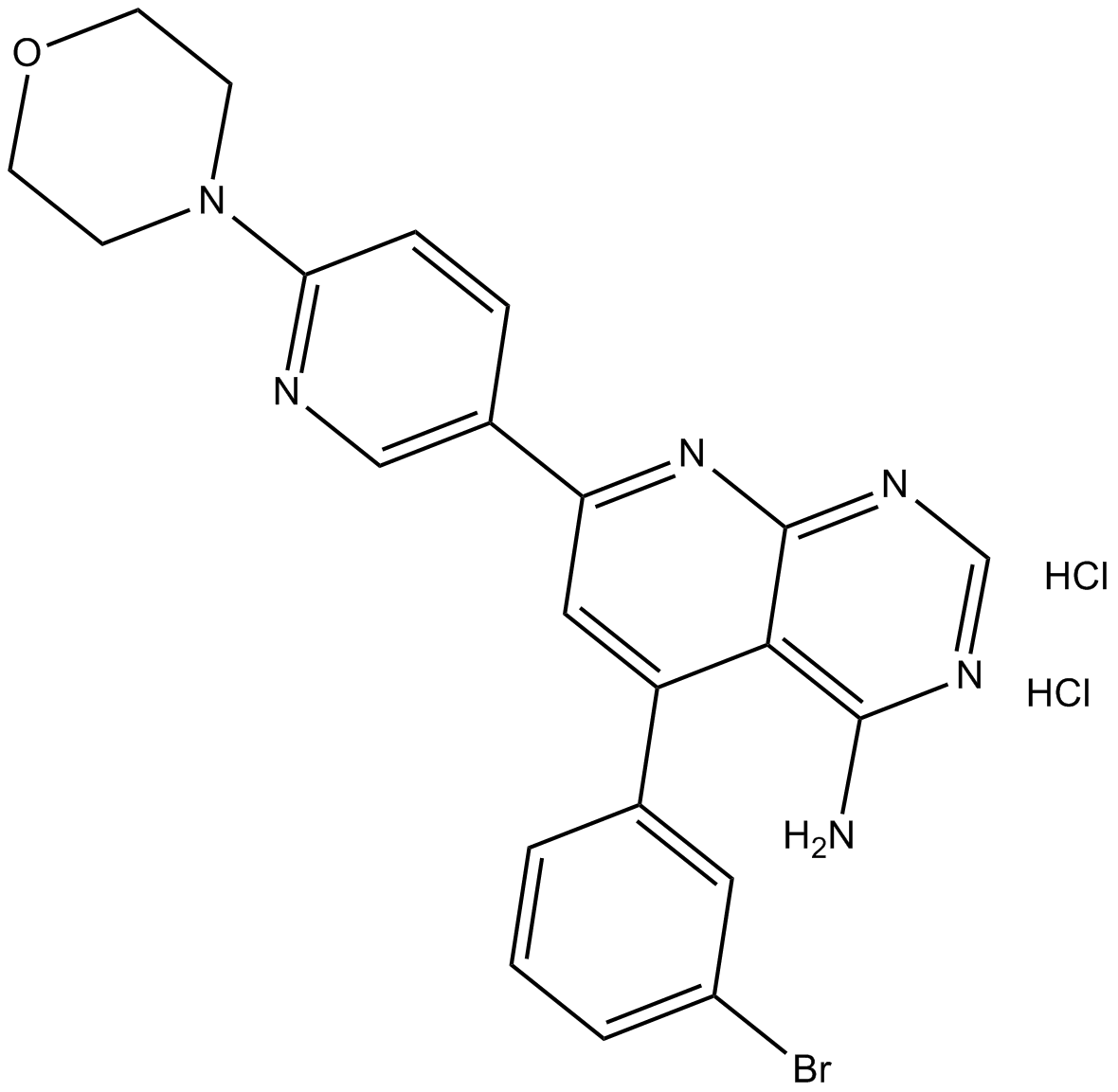ABT 702 dihydrochloride |
| Katalog-Nr.GC13416 |
ABT 702 Dihydrochlorid ist ein potenter Adenosinkinase (AK)-Inhibitor (IC50\u003d1,7 nM).
Products are for research use only. Not for human use. We do not sell to patients.

Cas No.: 1188890-28-9
Sample solution is provided at 25 µL, 10mM.
IC50: 1.7 nM for adenosine kinase
Adenosine (ADO) is an endogenous homeostatic inhibitory neuromodulator that reduces cellular excitability at sites of tissue injury and inflammation. Inhibition of adenosine kinase (AK), the primary metabolic enzyme for ADO, selectively increases ADO concentrations at sites of tissue trauma and enhances the analgesic and antiinflammatory actions of ADO. ABT 702 is a novel, potent nonnucleoside AK inhibitor.
In vitro: ABT 702 was active both in inhibiting AK (IC50 ) 1.7 nM) and ADO phosphorylation in the intact cells (IC50 ) 50 nM). ABT 702 was also highly selective for AK inhibition as compared to other sites of ADO action including ADA, ADO receptors, and ADO transport sites [1].
In vivo: ABT 702 had dose-dependent antinociceptive and antiinflammatory actions in a variety of animal models of nociceptive, inflammatory, and neuropathic pain. ABT 702 is the first of a novel class of potent, selective, non-nucleoside, orally active AK inhibitors that have potent antinociceptive effects in animal models [1].
Clinical trial: Up to now, ABT 702 is still in the preclinical development stage.
Reference:
[1] Lee CH, Jiang M, Cowart M, Gfesser G, Perner R, Kim KH, Gu YG, Williams M, Jarvis MF, Kowaluk EA, Stewart AO, Bhagwat SS. Discovery of 4-amino-5-(3-bromophenyl)-7-(6-morpholino-pyridin-3-yl)pyrido[2,3-d]pyrimidine, an orally active, non-nucleoside adenosine kinase inhibitor.. J Med Chem. 2001 Jun 21;44(13):2133-8.
Average Rating: 5 (Based on Reviews and 31 reference(s) in Google Scholar.)
GLPBIO products are for RESEARCH USE ONLY. Please make sure your review or question is research based.
Required fields are marked with *




















